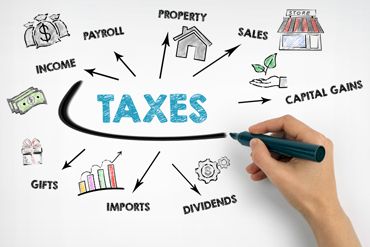Should You Pay Off Your Mortgage Before Retirement?
As retirement approaches, many individuals grapple with the decision of whether to pay off their mortgage early. This is a significant financial decision that can impact your financial security and peace of mind during retirement. In this blog, we’ll explore the pros and cons of paying off your mortgage before retirement, considering both financial and personal factors.
Pros of Paying Off Your Mortgage Before Retirement:
- Reduces Monthly Expenses: Eliminating your mortgage payment can significantly reduce your monthly financial obligations, allowing more of your retirement income to be used for other expenses or leisure activities.
- Saves Interest: Paying off your mortgage early can save you a substantial amount in interest payments over time, effectively providing a guaranteed return on investment equal to your mortgage interest rate.
- Simplifies Finances: Without a mortgage, your financial situation becomes simpler, which can be a significant relief as you manage your finances during retirement.
Cons of Paying Off Your Mortgage Before Retirement:
- Liquidity Concerns: Tying up a large portion of your savings in your home means less cash on hand for emergencies, investments, or other needs. This could impact your flexibility to handle unexpected expenses.
- Opportunity Cost: The funds used to pay off the mortgage could potentially yield a higher return if invested elsewhere, especially if your mortgage has a low interest rate. This is particularly true with investments in higher-yielding stocks or other securities.
- Tax Considerations: Paying off your mortgage could lead to a loss of tax benefits associated with mortgage interest deductions, depending on your tax situation.
Financial Considerations:
- Interest Rates vs. Investment Returns: Consider the interest rate of your mortgage in relation to potential returns from other investments. For example, if your mortgage interest rate is 3%, and you can earn 5% from a relatively safe investment, financially, it might make sense to not pay off your mortgage early.
- Impact on Retirement Funds: Analyze whether using your retirement savings to pay off the mortgage will affect your future income needs. Ensure you have enough liquidity to cover regular expenses and emergencies.
- Costs of Accessing Home Equity: If you might need to tap into your home equity later, consider the potential costs of home equity loans or lines of credit, which often come with higher interest rates.
Personal Considerations:
- Peace of Mind: For many, owning their home outright provides immense psychological comfort and stability, which can be crucial during retirement.
- Personal Financial Philosophy: Some individuals prefer being debt-free as they enter retirement, while others are comfortable managing debt if it means their money is working harder for them elsewhere.
Conclusion:
The decision to pay off your mortgage before retiring is highly personal and depends on a variety of financial and emotional factors. It’s important to weigh the guaranteed savings in interest against the potential returns from other investments, and consider how much value you place on the peace of mind that comes from being mortgage-free.
If you’re unsure about the best path forward, consider consulting with a financial advisor who can provide personalized advice based on your specific financial situation and retirement goals.
Next Steps with Crest Wealth Advisors:
At Crest Wealth Advisors, we understand that retirement planning is comprehensive and unique to each individual. We’re here to help you review your financial plan and make decisions that align with both your financial objectives and personal values. Reach out today to discuss your mortgage and retirement planning needs.



